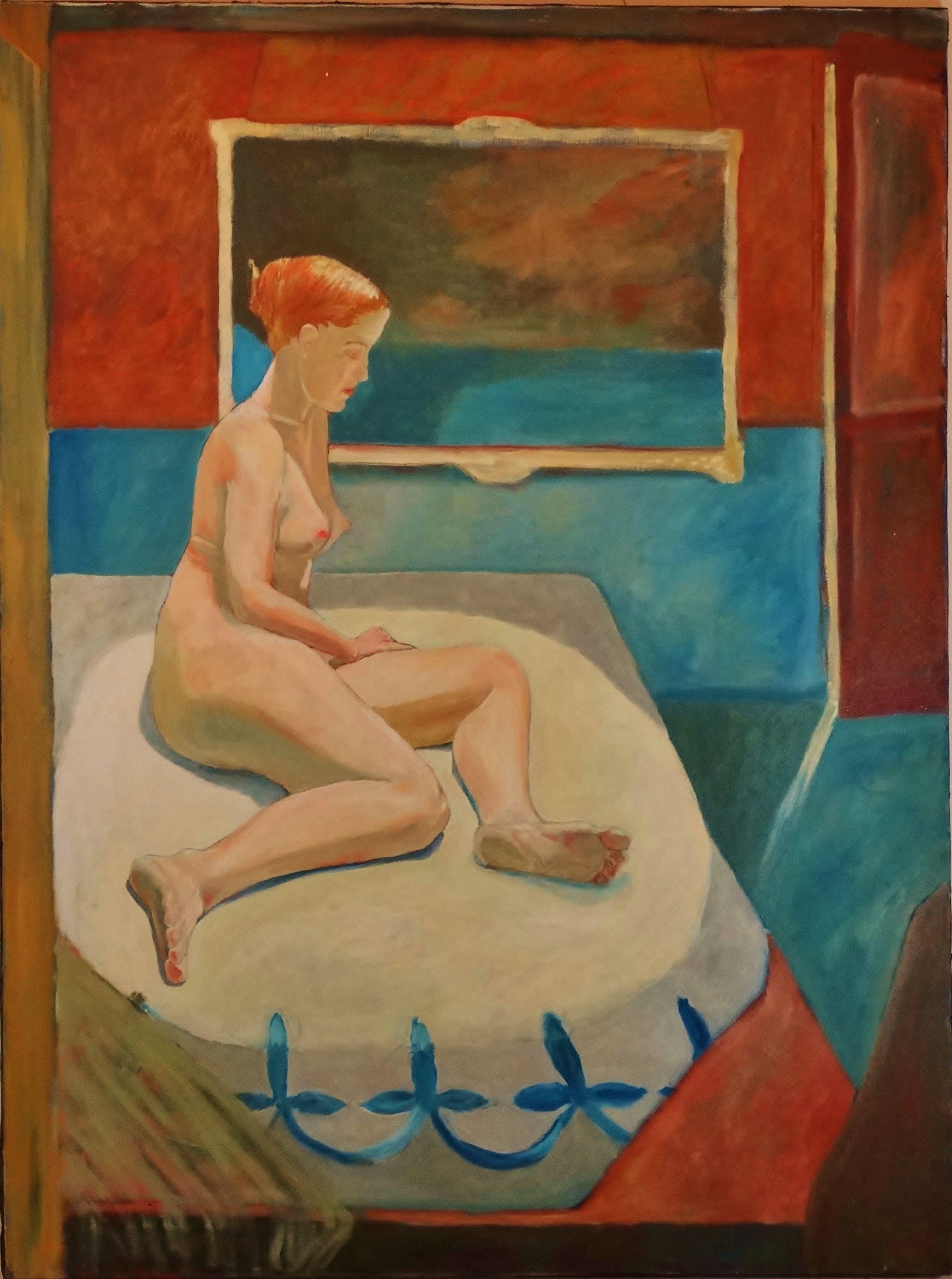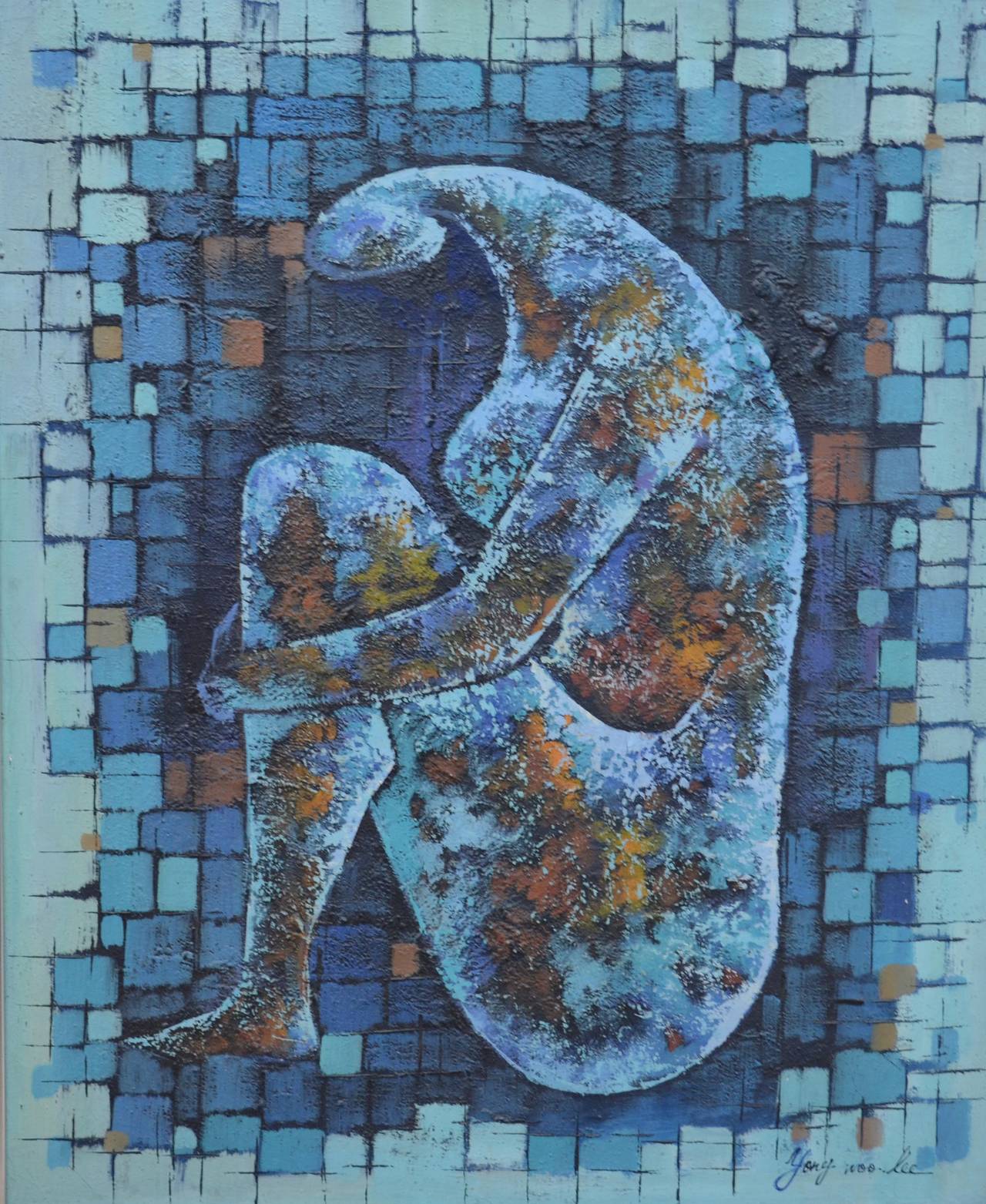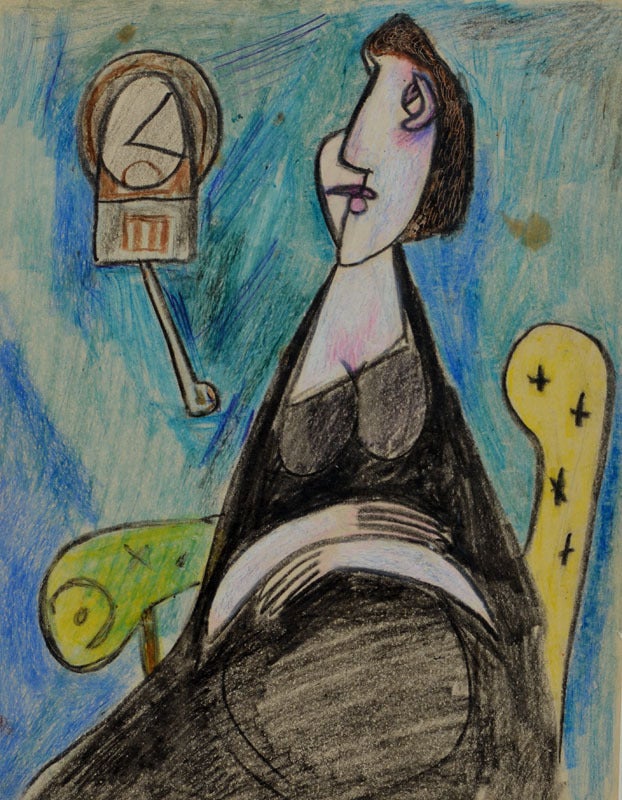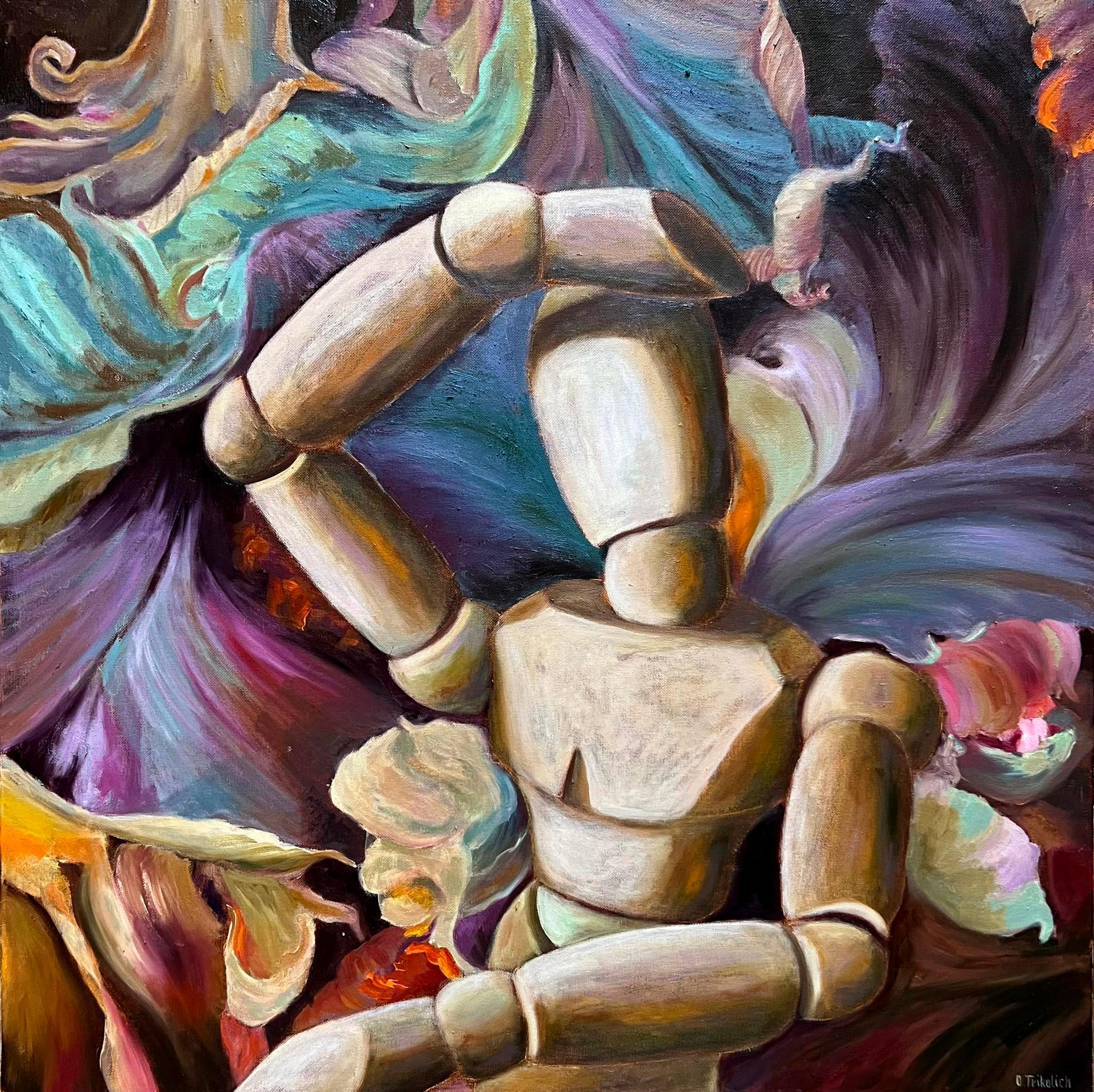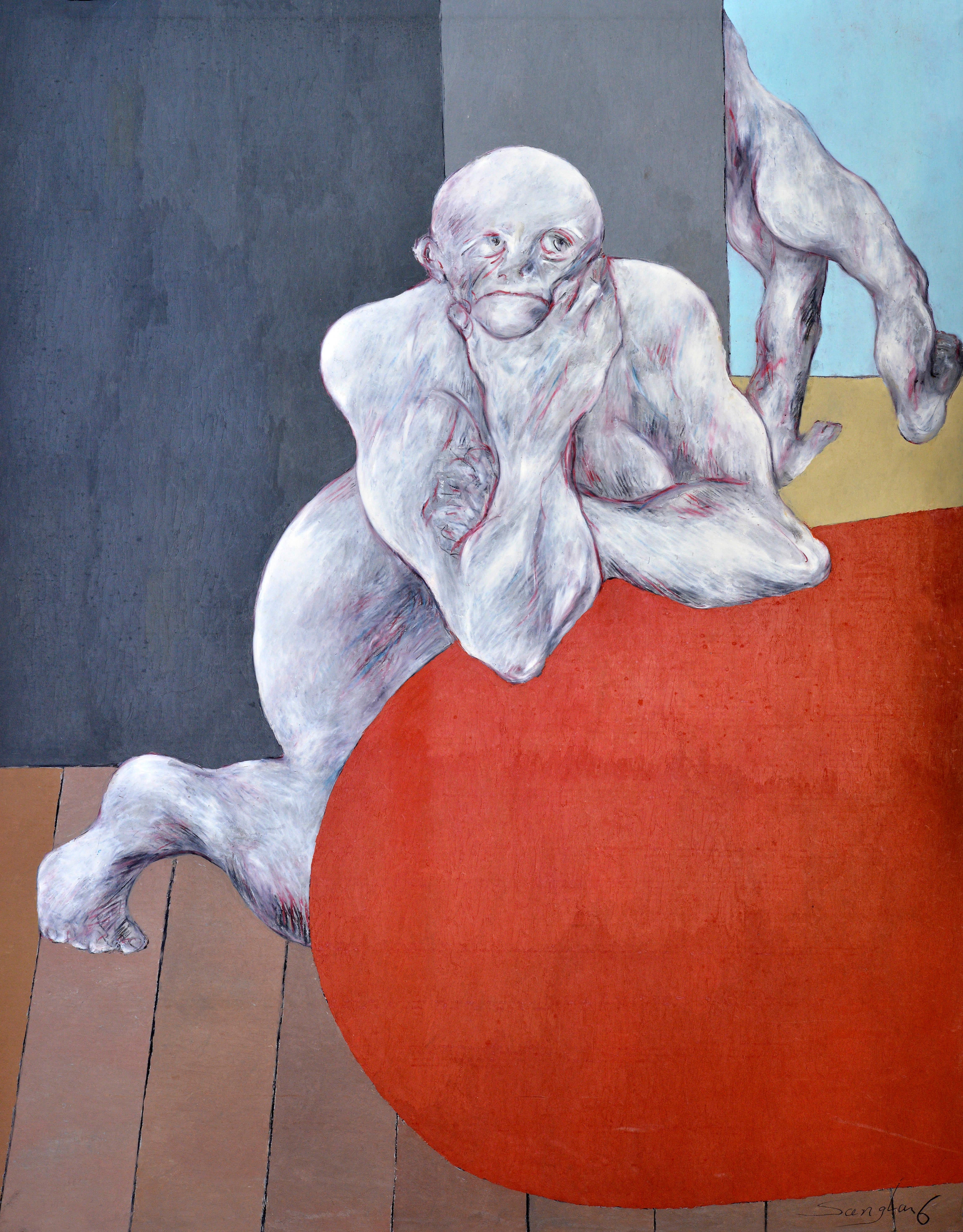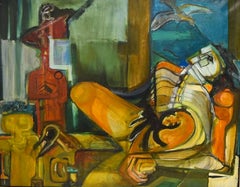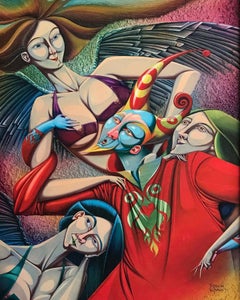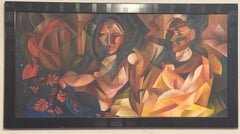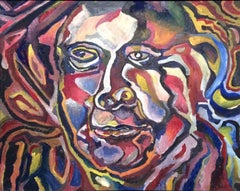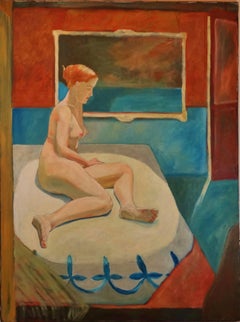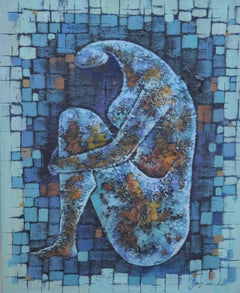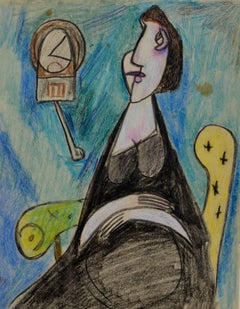Want more images or videos?
Request additional images or videos from the seller
1 of 6
Dickens ChangThe Waiting Game1987
1987
$2,750
£2,098.12
€2,399.32
CA$3,875.34
A$4,225.64
CHF 2,242.50
MX$51,086.62
NOK 28,380.53
SEK 26,014.70
DKK 17,920.46
About the Item
Dickens Chang
Born 1948
He designed posters for the 1984 Olympics in Los Angeles.
Chang was born in Honan, his name was Zhang Jianguo before he came to the United States.
The following is from an article in the Los Angeles Times tells the story of this exceptional artist, published January 4, 1999:
Consider the pressures of a name: Call your child Patience and she can never be hurried; choose Joy and she can never be sad.
But imagine the pressure if your name is Jianguo, Chinese for “establishing a country.”
So it’s no wonder that Dickens Chang, born Zhang Jianguo, sees himself as an artistic ambassador, a painter on a mission to blend centuries of Eastern tradition with the newer techniques of the West.“The Eastern hemisphere and the Western hemisphere eventually will come together,” Chang said. At 50, he is predicting a revolution in his own style that will represent that cultural fusion. “Eventually,” he said, “it’s going to be a territory or a kingdom that nobody has ever been to before.”
Ventura and New York are Chang’s bi-coastal bases for his crusade. Having just returned to Ventura after 10 years in the Big Apple, however, Chang has no interest in erasing that divide.
“This is so quaint,” he said recently. “It’s so comfortable, this place.”
Born in China, raised in Taiwan and educated in California, Chang moved to Ventura in 1980, renovated a Victorian house on Ash Street and began making a name for himself in the Southern California art world. He designed a series of posters for the 1984 Olympics in Los Angeles.
Needing to stake his claim among big-time artists, Chang bought a New York City loft in 1987. Shortly after his move, the stock market plummet and ensuing recession crippled New York’s art market. Chang continued to sell his art, but had to cast a wider net for buyers.
Now remarried and the father of two young children, Chang returned to Ventura a year ago to find “all the connections are still intact. . . . Nothing changes.”
The friends he left a decade ago have the same phone numbers. They work the same jobs, in a town that Chang thinks has “all the ingredients of a great city.”
But Ventura’s charming consistency has its drawbacks, he says.
“As far as I’m concerned,” Chang said, “this is still too small a place for an artist to be spiritually satisfied.”
So after settling his family here, Chang will spend most of his time in New York, where he believes the stimulation and pressures created by other artists will spur him to pursue his mission.
His paintings of the last year reflect the cultural combination he is working toward. Voluptuous nudes, updates of European masters, dance in oil-painted contortions that suggest feathery Chinese characters. Mongolian mustangs race across a field in a scene resembling the American West.
“Chang is original in the sense that he’s got an approach which is designed to build a bridge,” said Hans Schroeder, a Palm Springs art dealer who has represented Chang on the West Coast for 15 years. “He’s trying to bridge a cultural gap between China and the Western painting traditions.”
Specifically, Chang is trying to convert Asian artists, especially Chinese, from the East’s strict instructional methods in watercolor that he shunned to develop his own Western style in oil. In doing so, Chang hopes to introduce more Asian artists to the Western market. And he hopes that Western art, including his own, will gain appeal across the Pacific.
“In the past I had no desire at all to have my pieces shown there,” Chang said. But now dealers in Taiwan and Hong Kong have noticed him, and he is frantically preparing for a one-man exhibit next October at the National Museum of Fine Arts in Beijing.
“It’s probably going to be the most important thing happening in my life, that exhibit,” Chang said. “But I’m quite nervous right now because I don’t see any progress, too much of the domestic stuff.”
Chang has been distracted by moving his family to Ventura and opening a shop downtown, Timeless Beauty, with his wife, Wuping. Meanwhile, Schroeder reports, dealers and collectors are waiting for the artist to produce.
Chang’s paintings have fetched as much as $120,000 on the secondary art market, and Schroeder said he recently sold several for $10,000 each. At Timeless Beauty, Wuping Chang displays some of his smaller paintings, most of which sell for $1,850, and his bronze sculptures, most of which he did in the late 1970s.
Within Chang’s far-flung network of collectors are several locals, most of them friends since his first arrival in Ventura.
“He will only do originals, which I appreciate,” said Steven Snyder, a Ventura property manager who has six of Chang’s paintings. “A lot of the artists, they’ll do an original and they’ll do all kinds of prints, which saturates the market with their work.”
Snyder, who has collected Chang’s paintings since meeting him in 1989, said he has noticed a change in his friend’s art since Chang’s remarriage and the births of his children, now 5 and 2. Before, Snyder said, Chang’s work was full of anger and dark colors.
“Lately the colors have gotten brighter and the pictures, the paintings, have gotten more upbeat,” he said.
But Chang expects that optimism and benevolence will take a dark turn soon. For his upcoming exhibit in China, he is struggling to document a 1995 trip to India and all its misery, pungent smells and the rigid caste system of Hinduism.
“It’s been three years, and I’m still working on it,” he said.
The challenge for Chang--on top of producing enough paintings for a show 10 months from now--is not to portray India only as an impoverished culture.
“If I only depict the beggars and the suffering, I’ve missed the point,” he said. “This is going to be my contribution, and this is going to be what I’m going to leave to the world, and I don’t want to portray it in the wrong way.”
Previous trips--to China, including Tibet, and Mongolia, among other places--have not posed such difficulty. With degrees in journalism, Chang meticulously documents his travels with notes, photographs and sketches, which he uses to create a series of paintings.
“When I’m traveling, I’m quite observant,” he said. And “the more I travel, the more appealing Ventura seems to be.”
About the Seller
5.0
Vetted Professional Seller
Every seller passes strict standards for authenticity and reliability
Established in 1972
1stDibs seller since 2011
409 sales on 1stDibs
Typical response time: <1 hour
- ShippingRetrieving quote...Shipping from: Edgewater, NJ
- Return Policy
More From This Seller
View AllAbstract Figures
Located in Los Angeles, CA
UNIDENTIFIED
"ABSTRACT FIGURE"
OIL ON CANVAS, UNSIGNED
AMERICAN, C.1960S
27.5 X 35 INCHES
Fine Condition
Category
1860s Abstract Abstract Paintings
Materials
Oil
$950 Sale Price
51% Off
List plus Dopamine
By Rene Ramos
Located in Los Angeles, CA
Rene Ramos
Lust plus Dopamine
Oil on Canvas, Signed
Cuba
2015
31.5 x 25.5 Inches
Rene Ramos was born into a family of accomplished artists. Hi father Rene Martinez Sopena was an accomplished sculptor and teacher at the prestigious San Alejandro School, where Rene and his brother Yuri Martinez Ramos, also a world renowned painter, were graduates. The Martinez/Sopena family can also count amongst their artistic luminaries Hector Martinez and Sergio Martinez Sopena, uncles of Rene and Yuri, both master sculptors with works included in the permanent collection of the Museum of Bellas Artes in Havana, as well as countless collections around the world. Rene from a young age was a master drawer and painter, winning countless awards and scholarships. The competitive and artistic family atmosphere with his father, uncles and brother solidified Rene’s future aspirations of becoming an accomplished figurative painter of Cuban social scenes. The dynamics of Rene’s works can best be described as a narrative of whimsical social commentary of what it truly means to be Cuban in the latter half of the twentieth century and beyond. He takes his ques from family and friends and their interrelationships within Cuban society as it currently unfolds on the island. His works are not political in nature but rather reflects a poignant reminder of the resiliency of the Cuban spirit. His works offer a superior measure of detail utilizing a flow of powerful colors that jump off the canvas. One cannot help but admire and cherish any work of Rene’s a collector decides to take home. Group Shows: RDZ Fine Art –Arte Americas & Red Dot 2009-2012 RDZ Fine Art, Coral Gables, Fl – 2008 Cuban Dreams Papillon Gallery, Los Angeles, CA 2005-2007 Gallery of West Indian Art...
Category
21st Century and Contemporary Modern Figurative Paintings
Materials
Canvas, Oil
Lovers on the Couch
Located in Los Angeles, CA
Christian Marche
1935-2008
Marche was a prolific French artist best known for being one of the most significant pinball machine illustrators of the 1960s and 1970s.
He illustrated ...
Category
1990s Figurative Paintings
Materials
Canvas, Oil
$2,016 Sale Price
20% Off
Man Portrait
By Ann Singer
Located in Los Angeles, CA
ANN SINGER
"MAN PORTRAIT"
ACRYLIS ON CANVAS, SIGNED
CZECH, DATED 1983
35 X 29 INCHES Plus frame
Category
1980s Expressionist Figurative Paintings
Materials
Canvas, Acrylic
$675 Sale Price
77% Off
Les Luteurs
Located in Los Angeles, CA
Pascal Jarrion was born in 1961 in Perpignan, France, a region known for its Catalan culture as well as its influence on artists before him, including Picasso, Van Gogh, and Maillol....
Category
21st Century and Contemporary Figurative Paintings
Materials
Oil, Wood Panel
Les Boulistes
Located in Los Angeles, CA
Pascal Jarrion was born in 1961 in Perpignan, France, a region known for its Catalan culture as well as its influence on artists before him, including Picasso, Van Gogh, and Maillol....
Category
21st Century and Contemporary Figurative Paintings
Materials
Oil, Wood Panel
You May Also Like
Waiting, Painting, Oil on Canvas
By Leon Sarantos
Located in Yardley, PA
This painting portrays a nude woman, sitting in solitude as she waits for her lover. Her cream colored skin glows in contrast to the rich reds and blues of her boudoir. The angular...
Category
2010s Contemporary Paintings
Materials
Oil
Repose
By Y.W. Lee
Located in West Hollywood, CA
Presenting an original cubist oil on canvas by Y.W.Lee.
"Repose" is na original oil onc anvas, signed, c.1955, offered in good original condition, residing in a thin silver frame.
Category
1950s Modern Figurative Paintings
Materials
Oil
Price Upon Request
A Man Down and Out on His Luck
Located in Douglas Manor, NY
5106 Down and out oil on board by Westhayer 1957
Category
1950s Portrait Paintings
Materials
Oil
Waiting
By Ron Blumberg
Located in West Hollywood, CA
American artist Ron Blumberg was classically trained at La Grande Academie Chaumiere in Paris, 1932, before moving to New York where he became a National Academy artist and a member ...
Category
1940s Figurative Paintings
Materials
Oil Pastel
Price Upon Request
Insight
Located in Zofingen, AG
In my expressive art, I convey the emotions that arise in a person at the moment of awareness. I try to capture the beauty of the "Now" moment, in which there is no past or future. A...
Category
2010s Aesthetic Movement Figurative Paintings
Materials
Canvas, Oil
Think
By Jean Sanglar
Located in Miami, FL
Jean Sanglar was born in France in 1926. He draws with taste and talent from an early age, however, his family will only consider this a mere hobby. After studying law, he later took...
Category
Late 20th Century Neo-Expressionist Figurative Paintings
Materials
Mixed Media
$4,500
More Ways To Browse
Stock Market
Game Still Life Oil Painting
1984 Olympics
Mission Painting
1984 Los Angeles Olympics
Tennis Painting
Baseball Paintings
Blue Cowboy
Church In Mexico
Eyitayo Alagbe
Odd Nerdrum
Oil Painting Antique Pre 1900 Art
Oil Paintings Woman White
Soho Nyc
Unknown Russian Painting
Alabama Artist
Dutch Girl
Jean Renoir
